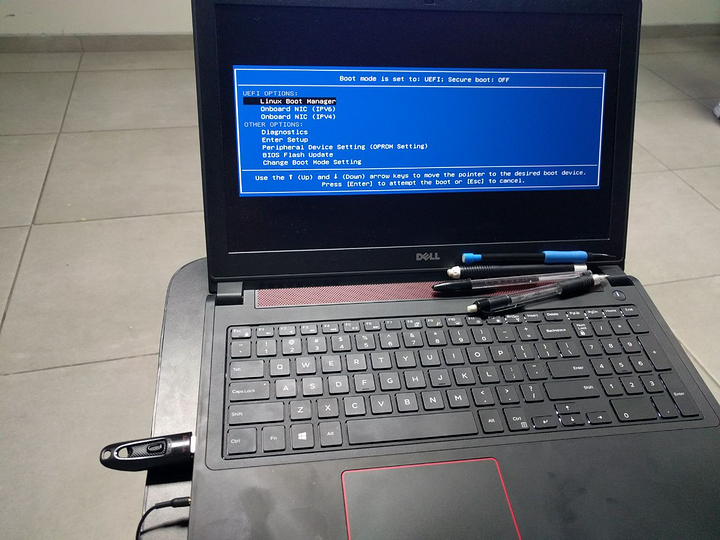I burn Win10 ISO’s all the time with with Etcher.
Something else is off about this.
Nope, nothing.
I already checked the USB by installind a linux distro and it does show as bootable on the laptop’s boot menu. I don’t know why it won’t show when burning the W10 ISO.
There is a guide about how to create bootable usb on Google ,I don’t know if it works, anybody know ?
The only way I got a working WIN10 iso on a usb was using the microsoft iso burner. I never got it working using Linux. So do you have a spare box or a friends computer to download it an burn it on a usb? I keep 1 usb for win10 in my drawer because of this
I am currently having this issue with a Lenovo tablet. The Windows 10 install USB is not recognized in the boot menu while other install USB (Fedora, for example) are. I downloaded the ISO using the media creation tool in a Windows 10 install. I tried burning it to USB with both Rufus and the official media creation tool.
I’m leaning towards something being weird with the ISO file it creates. I was going to try an 8.1 install tonight.
https://github.com/pbatard/rufus/issues/843https://github.com/pbatard/rufus/issues/843
The explanation of ISO vs dd mode in Rufus. Because of how Microsoft does things, simply dd’ing a Windows ISO to a USB drive hasn’t worked since Windows 7, possibly Vista. You’ll run into the same problem with OpenBSD.
If I recall correctly, the best way to do this is make a bootable partition on your thumb drive, format to NTFS (don’t forget the -Q for quick format), and copy the files out of the ISO on to the partition. That should get you a bootable USB drive.
I’ve only done it a couple of times successfully. Once done, though, I dd that to an image file, and keep that image file rather than the official Win10 ISO, because that image file can be dd’d back to a USB drive.
I set the partition as active and formatted as NTFS, then copied the ISO contents to the root of the USB drive. Still won’t show up in the boot menu on my Lenovo tablet. I tried with Safe Boot on and off. It boots fine using other computers.
I actually made a script in bash to do exactly this. It automates the creation of a bootable Windows USB in Linux using standard partitioning and tools.
The general trick to creating a bootable Windows USB in Linux is to format it has NTFS and bootable, mount the iso image and copy the files over which is what this script automates with some extra checking and a ui to make it simpler and repeatable.
Details on the script and how it was created can be found here:
Also have it on github:
First off, excellent script. That will come in handy I’m sure. Thank you.
Unfortunately this stupid tablet still does not see the Windows 10 USB boot device. It’s got to be something with the tablet. It also doesn’t see Windows 7 or 8.1 install USBs either.
Sorry to hijack the thread. I’ll fiddle with it some more and make my own thread if I don’t figure it out.
This happens with Debian based systems as well. I have tried dd and Gnome Disk Utility. Maybe it’s a Microsoft problem, fine whatever, it’s a major issue nonetheless.
I have formatted a USB drive as GPT NTFS and restored disk image. This has only become an issue recently, as prior I have been able to use Gnome Disk Utility to create Windows 10 bootable USB drives.
Just an FYI. I was saved when I found CLion is a suitable IDE for game development, so I don’t need Visual Studio or Windows. But it was a frustrating weekend. I ended up going to a Windows box and creating the image.
Burning .iso file to an USB is too easy, but if the USB won’t appear as bootable on the boot menu,maybe there are something wrong with your burning program,this means that the USB is not made a bootable disk.
